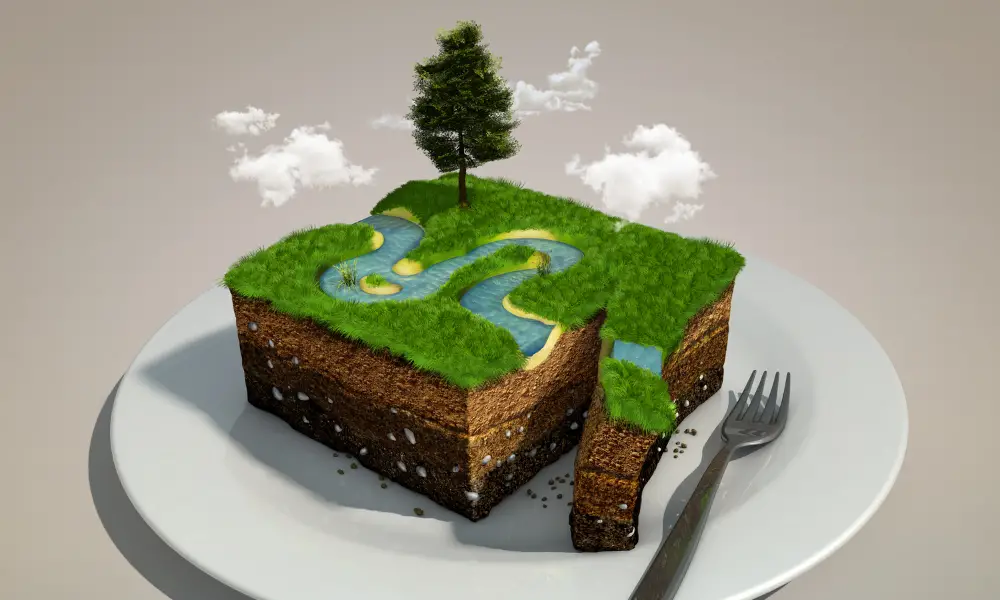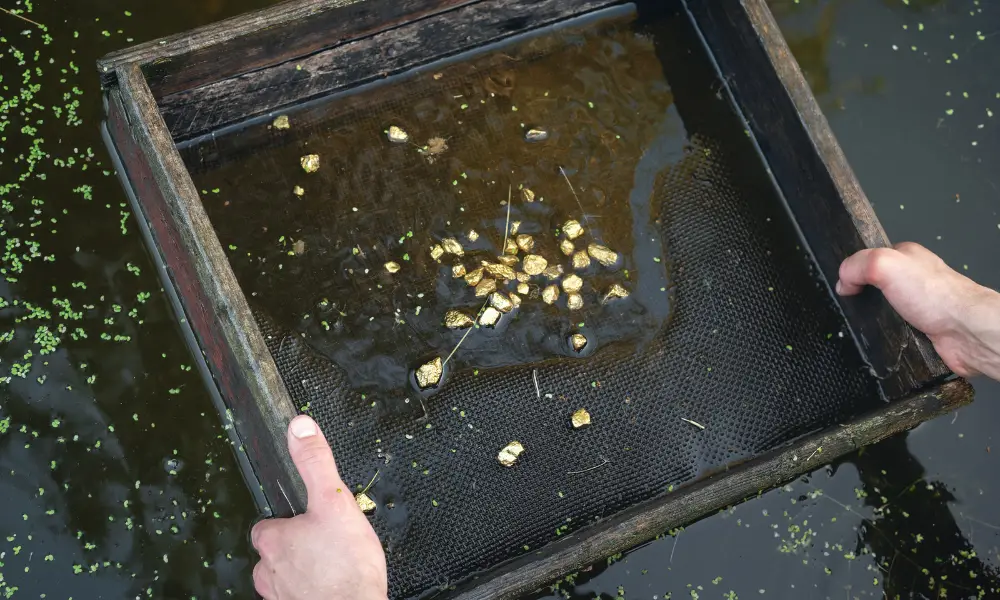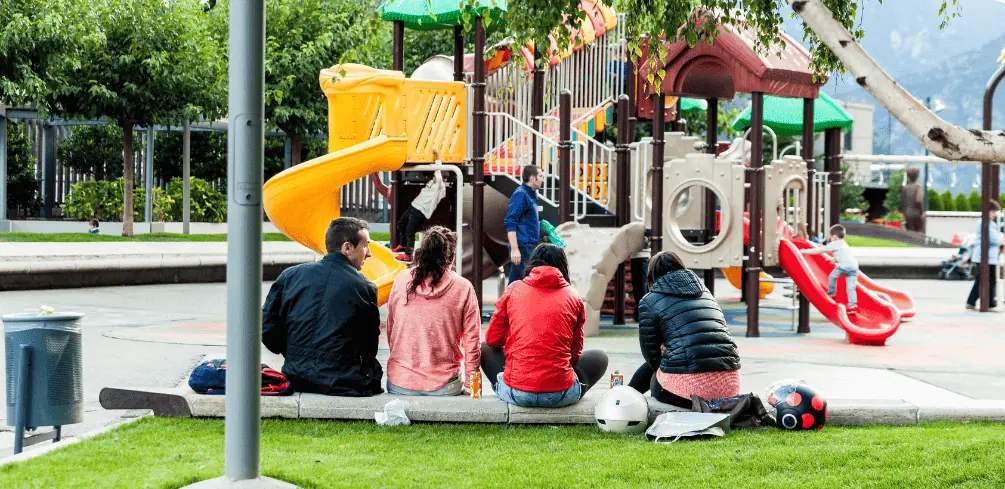Have you ever wondered if there’s a possibility of striking gold in your own backyard?
While it may seem far-fetched, the truth is that gold deposits can indeed be found in some unexpected places.
In this article, we’ll explore the geology of different regions to help you understand where gold might be hiding beneath your feet.
We’ll also delve into the signs that indicate the presence of gold deposits and formations, as well as introduce you to various tools and techniques used by prospectors for discovering those precious nuggets.
So grab your shovel and join us as we investigate whether or not a fortune could potentially lie just beneath your backyard’s surface!
Understanding the Geology of Your Area

So, you’re curious about the geology of your area and whether it might hold hidden gold in your backyard.
Understanding the local mineralogy and geological history is crucial for determining if such a valuable find could be lurking beneath your feet.
By learning about the rocks, minerals, and geological processes that have occurred in your area throughout time, you can gain insight into what kind of treasures might await your backyard exploration.
To begin unraveling the geologic story of your region, start by researching its tectonic history.
Did ancient volcanic activity or mountain-building events occur nearby?
Gold deposits are often associated with these phenomena due to the high concentrations of metals found within magma and hydrothermal fluids.
Additionally, study any known fault lines or fractures in your area’s bedrock – these features can serve as conduits for gold-bearing fluids to migrate through over time.
As you delve deeper into the geology of your surroundings, be sure to examine any existing mines or mineral occurrences documented near your property.
These sites can provide clues on where gold has been found before and how it might be distributed within the local landscape.
Remember that while finding gold in your backyard may not always be likely, understanding its geological context will undoubtedly enrich your appreciation for Earth’s intricate natural systems and maybe even spark a newfound passion for rockhounding!
Signs of Gold Deposits and Formation

Curious about the potential treasure beneath your feet? Look out for these signs of gold deposits and formations!
Gold is often formed in quartz veins within metamorphic rocks, so if you live in an area with a history of volcanic or hydrothermal activity, there’s a higher chance of finding gold.
Keep an eye out for specific gold erosion indicators such as iron staining on the rocks, as this can point to the presence of gold-bearing minerals.
Also, look for geological features like faults and folds where the earth’s crust has been disturbed, as these areas can create ideal conditions for deposit formations.
Another sign of possible gold deposits is the presence of placer deposits – accumulations of valuable minerals that have been separated from their source rock and concentrated by water.
Placer deposits are typically found in stream beds or along riverbanks where water flow has eroded away lighter materials while leaving heavier minerals like gold behind.
If you come across black sand (a mix of magnetite and hematite) on riverbanks or within creeks, it could be an indication that there might be gold close by since they share similar density characteristics.
Besides looking at the geology around your backyard, pay attention to any historical records or local legends about past mining activities.
Many people have discovered hidden treasures by following clues left behind by old miners who worked in the area decades ago.
So keep your eyes open and do some research about your region – you never know when you might stumble upon a golden opportunity!
Remember that even though it may seem unlikely to find significant amounts of gold in your backyard itself without previous evidence, understanding the signs and being watchful can increase your chances during exploration trips nearby!
Tools and Techniques for Gold Discovery

Armed with the knowledge of potential gold hotspots, it’s time to equip yourself with the right tools and techniques to unearth your own hidden treasures.
Gold prospecting is both an art and a science, requiring patience, persistence, and a keen eye for detail.
To increase your chances of finding gold in your backyard or any other promising area, consider these essential tools and techniques:
- Gold panning tips
- Metal detector usage
- Geological maps and guides
Gold panning is one of the simplest methods for discovering gold deposits, but it requires practice to perfect your technique. Begin by selecting a high-quality gold pan made from durable materials like metal or plastic.
Choose a location where water flow has potentially carried gold particles downstream from their source rock.
Fill your pan with sediment, then submerge it in the water while gently swirling to wash away lighter materials.
Keep an eye out for small flecks or nuggets that may be revealed as you sift through the remaining concentrated material.
Metal detectors can be incredibly useful in finding gold located below the surface. Start by familiarizing yourself with your metal detector’s settings and capabilities; some models are specifically designed for detecting precious metals like gold.
When using a metal detector, move slowly and methodically over the ground so you don’t miss any potential targets hidden beneath the soil.
If you receive a signal indicating there might be something valuable below, dig carefully around that spot to avoid damaging any possible treasure.
As you continue exploring potential gold deposits in your backyard or nearby areas, keep refining your skills using geological maps and guides that provide insights into local geology and mineralization patterns.
Study regional fault lines, ancient riverbeds, and quartz veins— all prime locations where Mother Nature may have deposited her golden riches over millennia of geological processes!
With each successful discovery comes a greater understanding of how nature formed these precious resources –and perhaps even more motivation to continue hunting for that elusive glittering prize hidden just beneath your feet.
Legal Aspects and Regulations of Gold Finds

Before you start digging up treasures, it’s crucial to familiarize yourself with the legal aspects and regulations surrounding gold finds in your area.
While discovering gold on your property might sound exciting, there are several factors to consider before you grab a shovel.
These include property ownership rights, permit requirements, and potential environmental impacts.
| Property Ownership Rights | Permit Requirements |
|---|---|
| Determine if the mineral rights are included in your property deed or owned separately. | Check local and state regulations for permits needed for prospecting or mining activities. |
| Understand who has the right to explore or mine minerals found on your land – this may be different from surface ownership rights. | Ensure that you have permission from relevant authorities (e.g., private landowners, government agencies) before starting any excavation work. |
| Understand who has the right to explore or mine minerals found on your land – this may differ from surface ownership rights. | Familiarize yourself with safety regulations governing prospecting and mining operations in your region. |
As you delve into these legal aspects, remember that each country or jurisdiction may have its own specific rules and regulations concerning gold finds.
In some cases, discoveries made on private land could be subject to government claims if not properly reported or permitted beforehand, whereas other jurisdictions might allow individuals to keep any discovered gold as long as they follow proper procedures.
While understanding these legal complexities may seem daunting at first, having a clear knowledge of them is essential for protecting both yourself and the environment during your search for gold in your backyard.
Take time to thoroughly research the laws applicable to your specific location before embarking on any treasure-hunting adventures – it will ensure a smoother journey toward uncovering those hidden riches!
Conclusion
Imagine unearthing a glimmering nugget of gold in your own backyard, forever altering the course of your life.
It’s not impossible, but understanding the geology and utilizing proper techniques can increase your chances of striking it rich.
Remember to stay informed on legal regulations before embarking on this adventure. With knowledge, persistence, and a keen eye for detail, you might just find that elusive treasure hidden beneath your feet.





